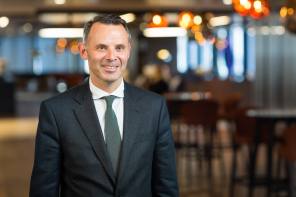

The self-employed market is experiencing a boom.
The latest figures from the Office of National Statistics show that the number of self-employed people increased to 4.8m in the period between February and April 2017, up by 103,000 from the same period in 2016.
This means that self-employed individuals in the UK make up 15 per cent of all people in work.
The potential for success in having your own business is a big draw for many people, despite the risks attached.
But for many going down the self-employed route there is danger ahead as they approach retirement age. As the self-employed population expands it raises the question of how many of these individuals will be able to save for their retirement.
Unlike those in full-time employment who are signed up by default to automatic enrolment scheme, self-employed individuals have to actively choose to set up their own pension pot.
Voluntary
And because it is voluntary, the number of self-employed who have signed up to their own pension programme is much, much lower than those in full-time employment.
The self-employed range from part-time workers and sole traders through to entrepreneurs that are on the path to creating a small business which will become an employer in the future.
Joinery, plumbing, taxi driving and hairdressing are among the largest sectors with self-employed individuals. But the statistics on how financially prepared they are for their future in retirement make for a worrying read.
According to a report by Aviva and Royal London on ‘Solving the under-saving problem among the self-employed’, one in five self-employed people do not have a financial plan for retirement other than relying on the state pension.
And latest figures from the Department of Works and Pensions (DWP) suggest that barely one in seven self-employed put any money into a pension last year, adding that the proportion has been falling for many years.
Key points
Many going down the self-employed route do not save enough for retirement.
The Lifetime Isa only works for the under 40s.
A report from Aviva and Royal London said that auto-enrolling self-employed people into a pension through the self-assessment tax process would help.
Women and pensions
Women are also at a greater disadvantage.
According to the study, self-employed individuals are much less likely to be female – 30 per cent compared to 49 per cent of male counterparts.
In terms of participation, the report found that only 8.9 per cent of self-employed women contribute to a pension, compared to 15.2 per cent of men.
By age group, individuals aged between 25 to 34 and 65 and over, have a lower participation than other age groups.
As a result many face a bleak retirement unless action is taken.
Nathan Long, senior pension analyst for Hargreaves Lansdown, said: “The number of self-employed is growing, but the same is not true of the number saving into pensions, which is why change is so necessary.
“Failure to take action risks creating a two-tier system in retirement. Almost half of the self-employed spend at least 10 years in this form of work. A gap of this length in your early 30s could reduce your pension pot at retirement by a quarter.
“The differences between the employed and the self-employed have been highlighted in detail, but it is their similarity that is so striking. Everyone is living longer, will be required to work longer and so will need more flexibility at the point of retirement.”
So, what are the solutions and how easy are they to implement?
The Lifetime Isa (Lisa) was launched by the government in April 2016 as a solution to the problem of under-saving by the self-employed.
But as it only captures people under the age of 40, it will not apply to the majority of self-employed individuals who are above the age of 46.
A number of proposals have also been put forward by different organisations.
Tax returns
One such proposal is for government to match the contributions that self-employed individuals make out of their taxable profits, a proposal suggested by the Tax-Incentivised Savings Association (Tisa).
For example, if a self-employed person diverted 4 per cent of their taxable profits into a pension then the government would match this in kind.
But Mr Long warned that recommendations to deduct 4 per cent of profits at the point of compiling a tax return and pay them to a pension provider of the person’s choosing is sound, but ultimately will fail.
He added: “Auto-enrolment has been a success so far because no engagement is necessary, so the recommendations need to go one step further and have a default pension provider in place, and that should be the National Employment Savings Scheme (Nest).
“However, personally engaging with retirement savings is crucial, so we would like the ability to choose your provider to be retained and the choice extended to employees too.”
The Aviva/Royal London report went on to suggest that an alternative way of using the tax return process to prompt pension saving would be to provide an opt-in option which would then benefit from a 1 per cent government top-up.
But the report's authors admit that if matching contributions are set at 1 per cent, many self-employed savers might limit their contributions to that amount.
Additionally, with the current budget deficit and growing national debt, it is unlikely the Treasury will be able to fund the matching contributions proposals.
Back in 2016, Royal London suggested grafting default pension savings onto the National Insurance system.
The Aviva/Royal London report also argues that linking the collection mechanism to the tax system could be seen as a tax rise, even if the money would revert to an individual's pension. The report added that there were a number of ways the proposal could be improved. These include nominating a receiving pension scheme and setting a contribution rate.
Also, the wording could be structured so that the contribution is a provision for later life, and outlines what the difference in living circumstances would be without a pension.
Royal London and Aviva’s suggestion has been backed by the long-awaited Taylor Review of Modern Working Practices, which was published in July.
The 116-page review by Matthew Taylor, chief executive of the Royal Society for the Encouragement of Arts, Manufactures and Commerce, concluded that effectively auto-enrolling self-employed people into a pension through the self-assessment tax process would help to deal with the issue.
But Scott Gallacher, director of Rowley Turton, said although it is true that self-employed individuals do not pay enough into their retirement, he believes self-employed individuals needed to take responsibility for themselves.
Echoing his thoughts, West Riding Personal Financial Solutions managing director Neil Liversidge said: “Self-employed people are used to taking responsibility for themselves which is why they are self-employed in the first place.”
To address the problem, Mr Liversidge has suggested the government increases annual allowances beyond the £40,000 threshold, which might allow self-employed individuals to put away more money in a year where they have a surplus.
The annual allowance is a limit on the amount that can be contributed to your pension each year, while still receiving tax relief. It is based on your earnings for the year and is capped at £40,000.
He added: “It should be recognised that where people have driven themselves to build their business the government should increase the annual allowance for people who historically have put very little into their pension.
“There are people who need to play catch-up with their pension and they should be allowed to put money in.”
Ima Jackson-Obot is a features writer for Financial Adviser



